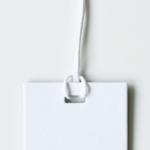Your lips may not be moving and you haven’t said a word, but you’re actually sending a message in all sorts of other ways without even realising it. You just have to make sure it’s the right one
So you‘ve been called for an interview for a great job. Your amazing CV has missed the reject pile, you’ve survived a telephone screening and now you think all you have to do is knock ‘em dead with your perfectly honed interview pitch.
Right? No…. sorry… wrong.
Remember that first impressions are created within the first 10 seconds to give a lasting impression.
55% of a person’s perception of you is based on the way you look, the rest is split between how you say what you‘re saying, and finally, after all that, what you actually say. I know.. tough! So even assuming you’re suited and booted in absolutely the right way, you’re completely prepared but will that be enough? No – afraid not. Non verbal communication is paramount. The way you look is significant , which incorporates, not just what you wear, but your posture, body language and general demeanour. These reveal more about you to the interviewer, than you will ever know. You want to show that you are calm, confident and professional, without being arrogant. Then you tell them how good you are.>
So what to think of ?
-
Smile – Remember we all smile in the same language. It’s the classic ice breaker.
-
Handshake – should be firm – but not bone breaking. Ladies, this is really important. No limp finger tip tickling.
-
Eye contact – is paramount -without looking crazed. It shows people you are engaged and interested. Erratic eye contact is associated with shiftiness and glazed eyes indicates lack of interest.
-
Introduce yourself – OK, I know this is verbal, but it is too closely related to first impressions to be excluded. This is particularly important if your name has a difficult pronunciation, or the interviewer has a different first language to your own. I thought I had a sure fire way around any misunderstanding by saying ” I’m sorry – how do you pronounce your name?” The guy didn’t miss a beat and replied “Mike “. Didn’t do that again. If you’ve misheard – just apologise and ask them to say their name again.
-
Repeat – the interviewers names a few times in the early part of your conversation ( without sounding robotic) more verbal communication – but for the same reason. This is a trick our US friends employ perfectly and one we Europeans could well emulate.
-
Posture – Sit or stand straight if you want to be seen as alert and enthusiastic. When you slump in your chair, perch on a desk or lean against a wall, you look tired and bored. No one wants to recruit someone who looks lethargic and lacking in energy
-
Body – The angle of your body gives an indication to others about what’s going through your mind. Leaning in shows interest, leaning or turning away the complete opposite. That says “I’ve had enough” Adding a nod of your head is another way to affirm that you are listening
-
Head – Keeping your head straight, will make you appear self-assured and authoritative. People will take you seriously. Tilt your head to one side if you want to come across as friendly and open.
If you want to Ace Your Interview check out Pitchcraft – Prepare, Practise, Perform
-
Arms – crossed or folded over your chest suggests a lack of openness and can imply that you have no interest in the speaker or what they are saying. This position can also say, “I don’t agree with you”. You don’t want to appear cold – I don’t mean temperature here. Too much movement might be seen as erratic or immature. The best place for your arms is by your side. You will look confident and relaxed. If this is hard for you, do what you always do when you want to get better at something – practice. After a while, it will feel natural.
-
Hands – In the business world, particularly when you deal with people from other cultures, your hands need to be seen. Make sure your fists aren’t closed – it suggests aggression. When you speak –don’t point your index finger at anyone. That is also an aggressive move. Having your hands anywhere above the neck, playing with your hair or rubbing your face, can be perceived as unprofessional.
-
Legs – A lot of movement can indicate nervousness.The preferred positions for the polished professional are feet flat on the floor or legs crossed at the ankles. The least professional and most offensive position is resting one leg or ankle on top of your other knee. It looks arrogant. That’s a guy thing (normally).
-
Personal Space -there are lots of cultural differences regarding personal space. Standing too close or “in someone’s face” will mark you as pushy or even aggressive. Positioning yourself too far away will make you seem remote. Neither is what you want, so find the happy medium. Most importantly, do what makes the other person feel comfortable. That shows empathy.
-
Listen well -Active listening is a form of non verbal communication.It is a real skill and demonstrates engagement and empathy. Paraphrase and ask for clarification of any points, to make sure you have fully understood. Modify your body language to indicate you are fully engaged – leaning in slightly, making eye contact and nodding affirmation.
-
Smell – if you’re a smoker do try not to smoke any time before your interview. The smell lingers and some people, especially today, find it offensive. I’m personally relaxed about perfume/aftershave – but others aren’t, so once again err on the side of caution.
Now you can make your elevator speech!






Dorothy,
Thanks for posting. I have enjoyed reading your blogs and will keep an eye out for them going forward. Following our helpful and friendly telephone conversation last month I have come to respect your opinion. I will be sure to recommend people who are looking for career coaching.
Best regards,
Amedeo Buonajuti